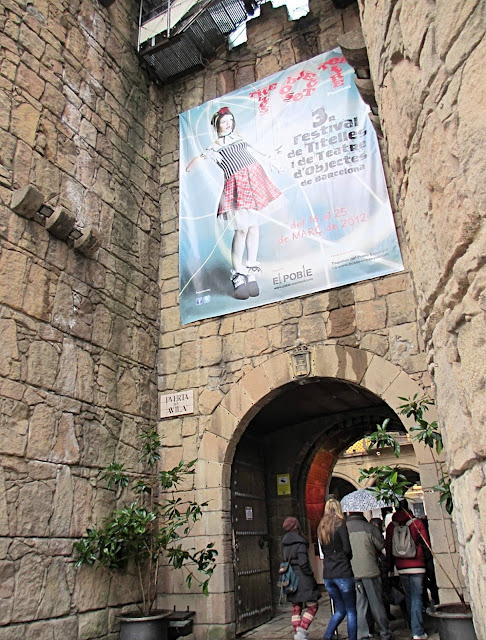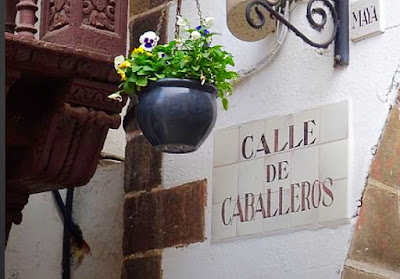Torre de Utebo
The photo above is the tower of the Church of Our Lady of the Assumption in Poble Espanyol. The original can be found in Utebo town in Zaragoza province, Northern Spain.
Located at the foot of Montjuic Hill, Poble Espanyol was built for the World Fair in 1929. The creators and architects traveled through some 1600 typical villages throughout Spain to capture the true essence of Spanish architecture in order to create a harmonious synthesis in one Spanish Village, right in the heart of Barcelona.
Poble Espanyol is the soul of Spain with traditional architecture, restauramts offering Spanish cuisine and shops selling local craftsmanship; a charming village altogether.
It was a rainy day for us during our visit to this village of many provinces. We were lucky there was no heavy showers. We quite enjoyed our walk in the light rain and tried Cava, which was delicious. The architecture was indeed spectacular. I must say this village would look fabulous when there's sunshine for accompaniment. I guess we have to come back again!
Church of the Carmelites Alcaniz
The original is from the Teruel province of Spain.
Visitors Centre
The Monastery of Saint Miquel
This is a Neo Romanesque monastery combining several
Catalan monasteries from the 11th and 12 centuries.
Catalan monasteries from the 11th and 12 centuries.
Quaint restaurant
From Calaceite village, Teruel province.
From the village of Fraga, Huesca province
From village of Besalu, Girona province.
Right building: From village of Murcia, Murcia province.
Left building: From the village La Jana, Castellon province.
Left building: From the village La Jana, Castellon province.
From the village of Cambados, Pontevedra province.
Cava, Spanish sparkling wine. Cava is the Catalan word for 'cellar'.
Orange trees
Right building: From the village Valle del Roncal, Navarra province.
Left building: From the village San Miguel de Villatuerta, Navarra province.
Left building: From the village San Miguel de Villatuerta, Navarra province.
Local craft shops




















































No comments:
Post a Comment